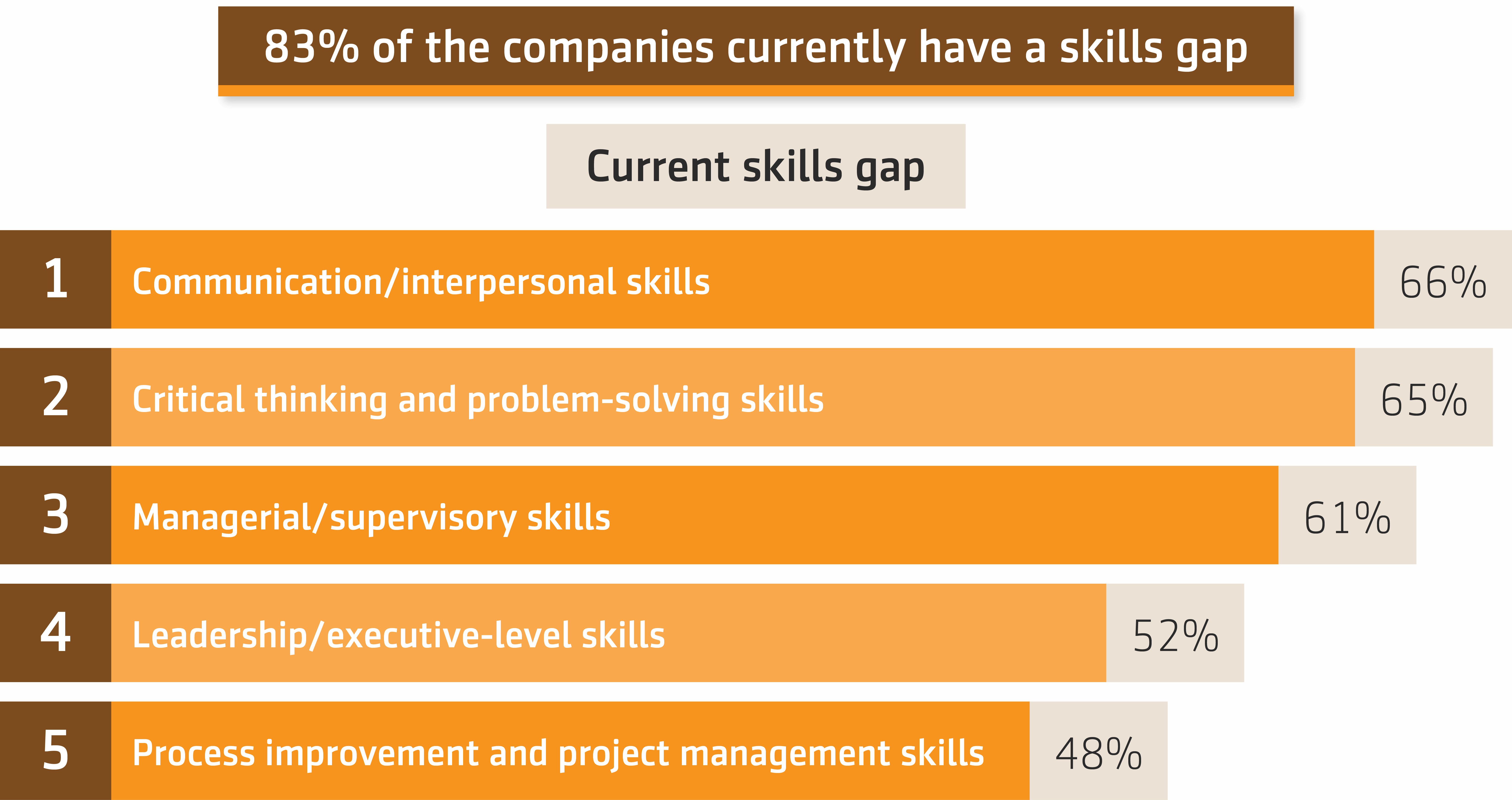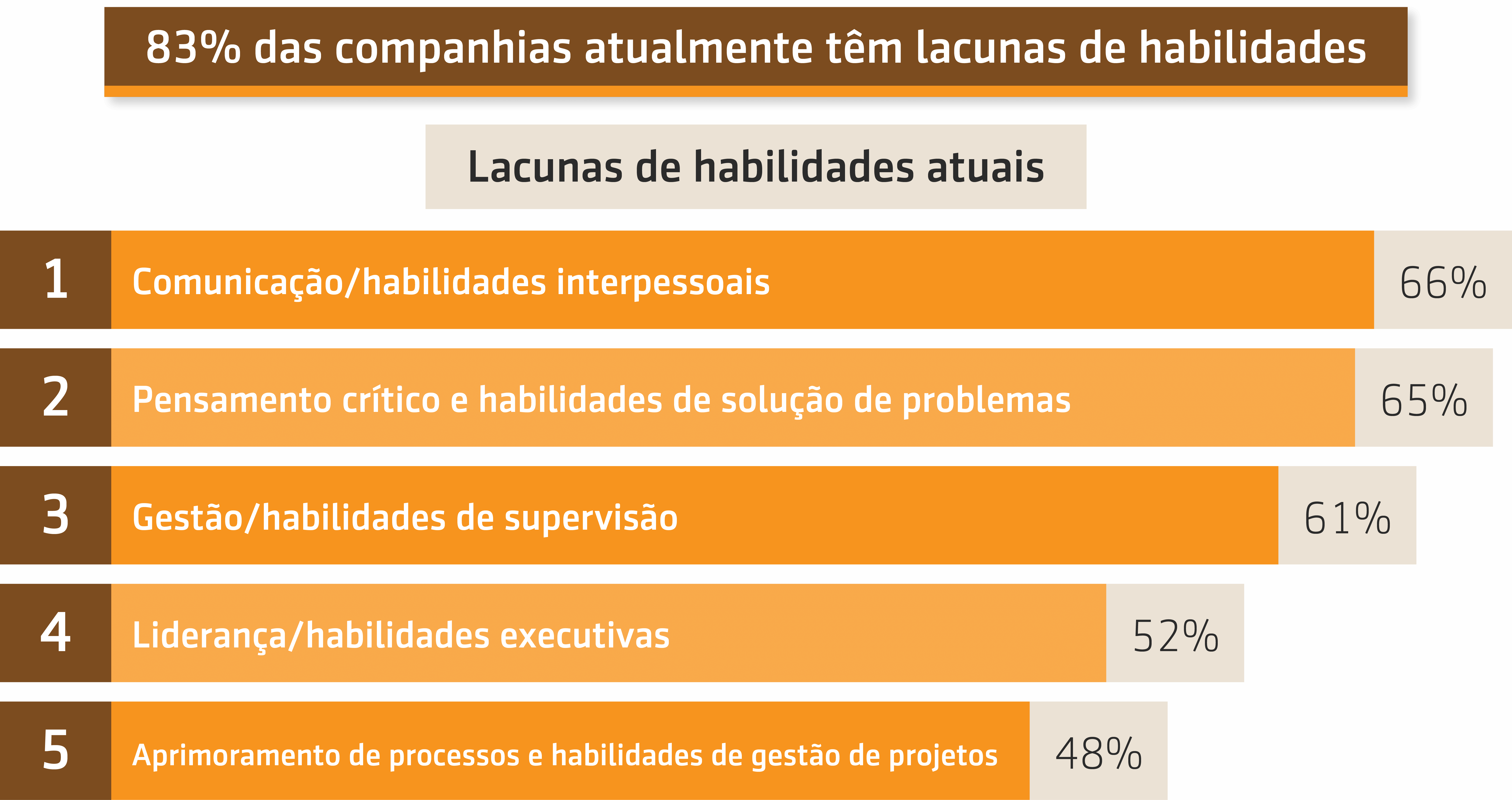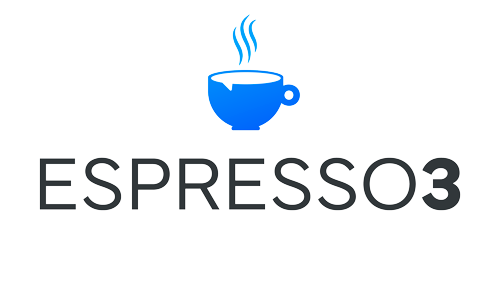We’re back at the ATD Conference 2019 and my next interviewee is Kristen Fyfe-Mills from ATD. She’s the author of this report Bridging the Skills Gap. We’ll discuss about these conclusions. I’m Wagner Cassimiro and this is the Espresso3.
Hi Kristen! Good to see you!
Hi! You too!
Why is there a skill gap in the organizations?
There’s a lot of things that are driving the skills gap. From a macro level, a lot of it is the pace of change. Digital transformation. Technology is moving so fast that people need to be in a constant upskilling mode. Some organizations are not prepared for that.
Their Talent Development functions are not robust enough. They are not looking forward, they’re looking at right now. So, they might be able to solve a short problem, but they are not looking at the long-term piece. Yet there are pieces that there are just people that don’t have the skills that are needed for 21st century workforce.
And as we talk about change and what’s coming, a lot of that is related to things around technology, but we’re also seeing in this report that things like soft skills which are really “hard” skills. Communication, critical thinking, are skills that are not being taught necessarily. Those are things that are starting to show up in organizations in less than great ways.
Do you have a number to say the relevance?
Yes! When we pooled several hundred companies, 83% say that they currently have a skills gap. 78% say they will have a skills gap in the future, they may have one now and they think that they will have one in the future. That number is a little bit different, it says that some companies that are focusing on closing gaps so that they won’t have them, but right now it’s a pretty serious and very widespread problem.
I’m curious to know the other skills that you covered in your research.
We gave our survey respondents a list of about 20 skills. Everything from IT basic skills, skills that you think people should show up with, how to respond to an email politely, or job specific skills, industry skills, IT skills, project management skills, communication skills, leadership skills.
What are respondents told us that it was those skills in those soft categories, communication, critical thinking, managerial/supervisory and leadership that were where the biggest gaps were.
People had proficiency in their job. They weren’t communicating well to each other and they did not have leadership potential. The leadership pipeline is very weak in many, many organizations.
What can we do to cover it?
Great question! There’s a couple of things.
What was interesting is that the gaps that we have now are the gaps that talent development professionals still see in the future.
A focus, a shift, maybe, in how we are looking at our programming in our L&D functions around things like soft skills, leadership development, become very important.
We’re at a point where, at least in the United States, we have so many people that will be retiring in the next five years. I think the number is ten thousand people a day in the US retiring from jobs. The brain drain, all the knowledge that you have about the organization walks out the door. What’s the plan to capture that knowledge for younger employees so that you’re not recreating the wheel? It’s a big question and a big problem that I think L&D has a role in helping fix that.
Is there any role for academic institutions as well?
I think there, absolutely, is!
One of the conversations that’s happening in the US is how do we train students, how do we educate students for the jobs that we don’t know are coming. Which is going to be about agility and it’s going to be less about prescribed particular courses, but maybe, embracing an idea of lifelong learning. Being a hungry student always. About knowing that you always have to be keeping your skills up and fresh if you want to stay competent and competitive.
But I do think there’s an opportunity at the university level to look at what it means to educate around those “soft-skills”.
How do you teach communication? None of us are borned knowing how to communicate well. Just because you say something doesn’t mean you’ve communicated. How do we teach people how to listen well? How do we teach people how to speak clearly? Presentation skills. All of those things that help people be effective in the workplace. But I think around leadership development, how do you teach leadership? How do you inspire people to understand what it means to lead others? Not micromanaging, being unafraid of risk. Those are things that we can develop in our students in much earlier age.
Interesting! These and many more results can be found in this report. And where can we find it?
Thank you!
You are very welcome!

TRADUÇÃO
Transpondo a lacuna de habilidades – ATD Conference, 2019
Estamos de volta à Conferência ATD 2019 e minha próxima entrevistada é Kristen Fyfe-Mills da ATD. Ela é a autora deste relatório Bridging the Skills Gap. Vamos discutir sobre essas conclusões. Eu sou Wagner Cassimiro e este é o Espresso3.
Oi, Kristen. Bom te ver!
Oi! E você também!
Por que existe uma lacuna de habilidades nas organizações?
Há várias coisas que estão gerando gaps de habilidades. De um nível macro, muito disso é o ritmo da mudança. Transformação digital A tecnologia está se movendo tão rápido que as pessoas precisam estar em um modo constante de aprimoramento. Algumas organizações não estão preparadas para isso.
Suas funções de Desenvolvimento de talentos não são robustas o suficiente. Eles não estão olhando para frente, eles estão olhando agora. Então, eles podem ser capazes de resolver um problema curto, mas eles não estão olhando para a peça de longo prazo. No entanto, há partes que são apenas as pessoas que não têm as habilidades necessárias para a força de trabalho do século XXI.
E quando falamos sobre mudança e o que está por vir, muito disso está relacionado a coisas ligadas à tecnologia, mas também estamos vendo neste relatório que coisas como habilidades comportamentais que são habilidades realmente difíceis. Comunicação, pensamento crítico, são habilidades que não estão sendo ensinadas necessariamente. Essas são coisas que estão começando a aparecer nas organizações de maneiras que não são ótimas.
Você tem um número para dizer a relevância?
Sim! Quando reunimos algumas centenas de empresas, 83% afirmam que atualmente possuem um gap de habilidades. 78% dizem que terão um gap de habilidades no futuro, eles podem ter um agora e acham que terão um no futuro. Esse número é um pouco diferente, diz que algumas empresas estão se concentrando em fechar gaps para que não os tenham, mas no momento é um problema bastante sério e muito difundido.
Estou curioso para saber as outras habilidades que você abordou em sua pesquisa.
Nós demos aos entrevistados da pesquisa uma lista com cerca de 20 habilidades. Tudo, desde habilidades básicas de TI, habilidades que você acha que as pessoas devem já ter, como responder a um e-mail educadamente ou habilidades específicas de trabalho, habilidades da indústria, habilidades de TI, habilidades de gerenciamento de projetos, habilidades de comunicação, habilidades de liderança.
O que os entrevistados nos disseram que foram essas habilidades nessas categorias comportamentais, comunicação, pensamento crítico, gestão/supervisão e liderança, onde estavam os maiores gaps.
As pessoas tinham proficiência em seu trabalho. Eles não estavam se comunicando bem um com o outro e eles não tinham potencial de liderança. O pipeline de liderança é muito fraco em muitas organizações.
O que podemos fazer para cobri-lo?
Ótima pergunta! Há algumas coisas.
O que foi interessante é que os gaps que temos agora são os que os profissionais de desenvolvimento de talentos ainda veem no futuro.
Um foco, uma mudança, talvez, em como estamos olhando para a nossa programação em nossas funções de T&D em torno de coisas como habilidades comportamentais, desenvolvimento de liderança, torna-se muito importante.
Estamos em um ponto em que, pelo menos nos Estados Unidos, temos muitas pessoas que se aposentarão nos próximos cinco anos. Eu acho que o número é de dez mil pessoas por dia nos EUA se aposentando dos empregos. A fuga de cérebros, todo o conhecimento que você tem sobre a organização sai pela porta. Qual é o plano para capturar esse conhecimento para os funcionários mais jovens, para que você não esteja recriando a roda? É uma grande questão e um grande problema que eu acho que T&D tem um papel em ajudar a consertar.
Existe algum papel para instituições acadêmicas também?
Eu acho que, com certeza, tem!
Uma das conversas que está acontecendo nos EUA é como treinamos os alunos, como educamos os alunos para os trabalhos que não sabemos que surgirão. Que vai ser sobre agilidade e vai ser menos sobre determinados cursos prescritos, mas talvez, abraçando uma ideia de aprendizagem ao longo da vida. Ter fome de aprender sempre. Sobre saber que você sempre precisa manter suas habilidades atualizadas se quiser se manter competente e competitivo.
Mas eu acho que há uma oportunidade no nível universitário para ver o que significa educar em torno dessas “habilidades comportamentais”.
Como você ensina comunicação? Nenhum de nós nasceu sabendo como se comunicar bem. Só porque você diz alguma coisa não significa que você se comunicou. Como ensinamos as pessoas a ouvir bem? Como ensinamos as pessoas a falar claramente? Técnicas de apresentação. Todas essas coisas que ajudam as pessoas a serem eficazes no local de trabalho. Mas eu penso em desenvolvimento de liderança, como você ensina liderança? Como você inspira as pessoas a entender o que significa levar os outros? Não micro gerenciando, não temendo risco. Essas são coisas que podemos desenvolver em nossos alunos muito mais cedo.
Interessante! Estes e muitos mais resultados podem ser encontrados neste relatório. E onde podemos encontrá-lo?
Obrigado!
De nada!

